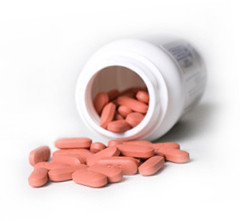Aflatoxin is a toxin produced by a fungus that has contaminated food or the ingredients used for makign the food. It can be a serious problem for pets. Please contact us with any questions regarding your pet’s health if your pet has been eating one of these foods.
AFLATOXIN-RELATED
PET FOOD RECALLS
Advanced Animal Nutrition
Advanced Animal Nutrition announced a voluntary recall of its dry Dog Power Dog Food- due to aflatoxin levels that were detected above the acceptable limit. The affected products were manufactured between January 4, 2011 and November 18, 2011. No illnesses have been reported in association with these products to date, and no other Advanced Animal Nutrition pet food products are involved in this recall.
Affected products are Dog Power Adult Maintenance Formula 21-12 Dog Food, 50 pound bags, Dog Power Hunters Formula 27-14 Dog Food, 50 pound bags, Dog Power Hi-Pro Performance Formula 26-18 Dog Food, 50 pound bags. The recall only applies to the products with the following Packaging Date Codes (lot numbers): K0004 through K1322.
While no adverse health effects related to these products have been reported, Advanced Animal Nutrition is implementing this recall as a precautionary measure. Consumers are urged to return affected products -whether in opened or unopened packages – to their place of purchase for a full refund. For more information, contact 866/648-7646.
Arrow Brand Dog Food
O’Neal’s Feeders Supply of DeRidder, LA, announced that it has recalled an entire year’s worth of dry Arrow Brand dog food due to corn with elevated levels of aflatoxin. The recall affects food manufactured between December 1, 2010 and December 1, 2011.
The recall applies only to dog food distributed throughout Louisiana and Texas with packaging date codes 4K0341 through 4K0365 and 04K1001 through 4K1325. The affected products include Arrow Brand 21 percent Dog Chunks 40 lb. bag, Arrow Brand Super Proeaux Dog Food 40 lb. bag and Arrow Brand Professional Formula Dog Food 50 lb. bag.
Cargill Animal Nutrition
Cargill says it has heard no reports of illness, but the recalled dog foods are Professional Formula River Run Hi-NRG 24-20 Dog Food, 50 pound bags, River Run Professional Formula 27-18 Dog Food, 50 pound bags, River Run 21% Protein Dog Food, 40 and 50 pound bags and Hi-Pro No-Soy Dog Food, 40 and 50 pound bags, Marksman Dog Food 24% Protein 20% Fat, 40 pound bags, 20% Protein 10% Fat, 40 and 50 pound bags and 28% Protein 18% Fat, 40 pound bags.
The recall applies only to the above products with these packaging date codes (lot numbers): 4K0335 through 4K0365, LL0335 through LL0365, 4K1001 through 4K1335 and LL1001 through LL1335. Cargill says no other of its Animal Nutrition pet food products are involved.
Consumers can return the recalled dog food – whether in opened or unopened packages – to the place of purchase for a full refund. For more information, including photos of products involved, go to www.cargill.com/feed/dog-food-recall or call toll free 855/460-1532.
Iams Pet Food – Proctor & Gamble
The parent company of Iams pet food, Procter & Gamble (P&G), is voluntarily recalling a single production lot of ProActive Health Smart Puppy dry dog food due to aflatoxin levels that were detected to be above the acceptable limit.
The recall is limited to Iams ProActive Health Smart Puppy dry dog food with Use By or Expiration Dates of February 5 or February 6, 2013. Affected lot numbers include 7.0-pound bags: 12784177I6, 1901402305; 8.0-pound bags: 12794177D2, 12794177D3, 1901410208; 17.5-pound bags: 12794177K1, 12794177K2 and 1901401848.
The recalled Iams ProActive Health Smart Puppy dry dog food has already been removed from store shelves. No other Iams products were affected. P&G advises consumers who purchased this product with the above lot numbers to stop using and discard it. You can contact Iams at 866/908-1569 for a replacement voucher.
Petrus Feed and Seed Stores
Petrus Feed and Seed Stores, Inc. announced a voluntary recall of its dry dog food – 21% Protein Dog Food in 40 lb Petrus Feed bags. The product is being recalled because the product was manufactured with corn which tested above acceptable levels for Aflatoxin. The affected products were manufactured at Cargill’s manufacturing facility located in LeCompte, Louisiana between December 1, 2010 and December 1, 2011.
The recall only applies 21% Dog Food, packaged in 40 lb Petrus Feed bags with the following packaging Date codes (lot numbers) 4K1011 through 4K1307. Updated lot numbers are 4K1011 through 4K1335.
While no adverse health effects related to these products have been reported, Petrus Feed and Seed Store, Inc. is implementing this recall as a precautionary measure. Consumers are urged to return affected products -whether in opened or unopened packages – to their place of purchase for a full refund. For more information contact 318/443-2259, Monday – Friday, 7:30 am – 5:30 pm and Saturday, 7:30 am – 1:00 pm.
View a List of Recalls, Market Withdrawals & Safety Alerts from the FDA Here



























